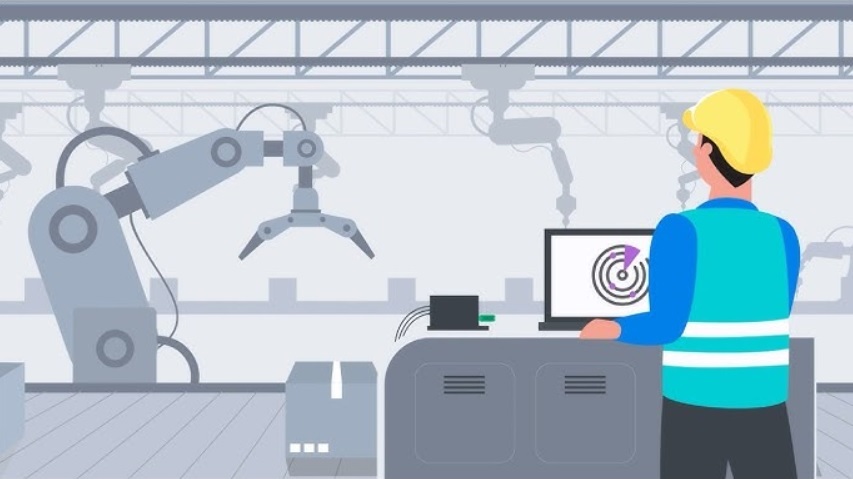Author: Sam Francis
Governance, Risk Management, and Compliance (GRC) have become critical components of cybersecurity strategies across all industries. However, in manufacturing, the application of GRC principles is particularly complex and unique due to the convergence of Information Technology (IT) and Operational Technology (OT), stringent regulatory requirements, and the industry’s reliance on global supply chains. Understanding these distinct aspects of GRC cybersecurity is essential for protecting sensitive information, ensuring operational continuity, and maintaining compliance with evolving regulations.
The Convergence of IT and OT
One of the most unique challenges in manufacturing cybersecurity is the convergence of IT and OT. Traditionally, IT systems managed data, communications and business operations, while OT systems controlled physical processes and machinery on the factory floor. However, Industry 4.0 has blurred these lines, as manufacturers connect OT systems to networks to enhance productivity.
This convergence introduces new risks that traditional GRC frameworks might not fully address. For example, OT systems often run on legacy software that was not designed with cybersecurity in mind, making them vulnerable to attacks. Additionally, many OT systems operate in real-time and cannot tolerate downtime, complicating the implementation of security patches and updates. A cyberattack on OT systems can lead to physical damage, safety hazards, and significant operational disruptions.
Manufacturers must therefore adapt their GRC strategies to account for the unique characteristics of OT environments. This includes developing policies that address the specific risks associated with OT systems, conducting regular risk assessments to identify vulnerabilities, and ensuring that compliance efforts extend to both IT and OT domains.
Real-World Example: General Electric (GE) has faced significant challenges due to this IT/OT convergence. Their digital transformation efforts introduced new cybersecurity risks, especially with OT systems running on legacy software. To address these risks, GE developed a comprehensive cybersecurity strategy that includes real-time monitoring and segmentation of IT and OT networks. This approach has enhanced GE’s ability to detect and respond to threats while protecting critical manufacturing operations.
Emerging Trend: Integration of AI and Machine Learning. AI and Machine Learning (ML) are increasingly used to address the complexities of IT/OT convergence. These technologies enable real-time threat detection and predictive analytics, helping manufacturers like GE manage risks more effectively and maintain a robust cybersecurity posture.
Complexity of Global Supply Chains
Manufacturing is a globalized industry, with complex supply chains that span multiple countries and involve numerous suppliers, partners, and subcontractors. While this global network is essential for efficient production and cost management, it also introduces significant cybersecurity risks. A single weak link in the supply chain can compromise the entire manufacturing process, leading to breaches of sensitive data, intellectual property theft, and disruptions to production.
GRC frameworks in manufacturing must account for the risks associated with global supply chains. This includes assessing the cybersecurity practices of suppliers and partners to ensure they meet the same standards as the manufacturer. Additionally, manufacturers must establish clear policies for managing third-party risks, including contractual obligations for cybersecurity measures and incident response protocols.
Supply chain security is not only a matter of protecting data and systems but also ensuring regulatory compliance. For example, manufacturers that export products to the European Union must comply with the General Data Protection Regulation (GDPR), which includes strict requirements for data protection throughout the supply chain. Failure to comply with these regulations can result in significant fines and damage to the company’s reputation.
Real-World Example: Toyota. In 2020, Toyota experienced a data breach affecting its global supply chain. To mitigate future risks, Toyota implemented stricter cybersecurity requirements for suppliers and partners, including comprehensive risk assessments and continuous monitoring. These measures improved Toyota’s ability to manage supply chain risks and ensure regulatory compliance.
Emerging Trend: Evolution of Supply Chain Cybersecurity Standards. As global supply chains become more interconnected, evolving cybersecurity standards are helping manufacturers manage third-party risks. These updated guidelines include requirements for thorough risk assessments and data protection measures, enhancing overall supply chain security.
Regulatory Compliance and Industry Standards
Manufacturing is a heavily regulated industry, with numerous standards and regulations governing everything from product safety to environmental impact. In recent years, cybersecurity has become an increasingly important aspect of regulatory compliance, with governments and industry bodies imposing stricter requirements on manufacturers to protect critical infrastructure and sensitive data.
One of the key challenges in manufacturing GRC is navigating the complex and evolving landscape of cybersecurity regulations. For example, in the United States, manufacturers may need to comply with the National Institute of Standards and Technology (NIST) Cybersecurity Framework, which provides guidelines for protecting critical infrastructure. Similarly, the European Union’s Network and Information Systems Directive (NIS Directive) sets out cybersecurity requirements for operators of essential services, including manufacturers.
In addition to regulatory requirements, manufacturers must also adhere to industry-specific standards, such as the International Organization for Standardization (ISO) standards for information security management (ISO/IEC 27001) and industrial automation and control systems security (IEC 62443). Compliance with these standards not only helps manufacturers meet regulatory obligations but also demonstrates a commitment to cybersecurity best practices, which can enhance customer trust and business reputation.
Given the complexity of these regulatory and industry requirements, manufacturers must integrate compliance into their GRC frameworks. This involves conducting regular audits to ensure adherence to relevant standards, maintaining detailed records of compliance efforts, and staying informed about changes in regulations that may impact their operations.
Real-World Example: Siemens must comply with various regulations like the NIST Cybersecurity Framework and the EU’s GDPR. Siemens integrated compliance requirements into their GRC strategy by conducting regular audits and maintaining detailed compliance records. This approach helped Siemens manage regulatory obligations and demonstrate a commitment to industry standards.
Emerging Trend: Increased Focus on Zero Trust Architecture (ZTA) as it is becoming crucial for regulatory compliance. By enforcing continuous authentication and validation of all users and devices, ZTA enhances security in both IT and OT environments, addressing risks associated with regulatory requirements and industry standards.
Intellectual Property Protection
Intellectual property (IP) is a critical asset for manufacturers, representing the innovation and proprietary knowledge that give companies a competitive edge. However, the increasing digitization of manufacturing processes has made IP more vulnerable to cyber threats. Cybercriminals and nation-state actors target manufacturers to steal valuable IP, including designs, formulas, and production techniques.
Protecting IP in the manufacturing sector requires a comprehensive GRC approach that encompasses both cybersecurity measures and legal protections. Manufacturers must implement robust access controls to restrict access to sensitive information, encrypt data both in transit and at rest, and monitor network activity for signs of unauthorized access or data exfiltration. Additionally, companies should develop policies for responding to IP theft, including legal recourse and collaboration with law enforcement.
Moreover, manufacturers must ensure that their GRC frameworks account for the specific risks associated with IP protection in a global context. This includes understanding the legal landscape in different countries, where IP laws and enforcement may vary significantly, and implementing strategies to protect IP when collaborating with international partners.
Real-World Example: Siemens also focuses on protecting its IP against cyber threats. The company employs robust access controls, encryption, and network monitoring to safeguard sensitive information. Siemens’ GRC framework includes policies for responding to IP theft, highlighting the importance of integrating legal protections with cybersecurity measures.
Emerging Trend: Enhanced Focus on Industrial IoT (IIoT) Security. With the rise of IIoT devices, securing these connected systems is becoming increasingly important. Manufacturers are implementing advanced threat detection and secure device management to protect against vulnerabilities introduced by IIoT.
Human Factor and Cybersecurity Culture
While technology is crucial, the human factor remains a significant challenge. Employees and third-party vendors can unintentionally introduce vulnerabilities through actions such as phishing attacks, weak password practices, or mishandling of sensitive data. As a result, fostering a strong cybersecurity culture is essential for mitigating risks and ensuring the effectiveness of GRC efforts.
Manufacturers must prioritize cybersecurity awareness and training programs as part of their GRC frameworks. This includes educating employees about the specific risks associated with manufacturing environments, such as the potential consequences of a cyberattack on OT systems, and providing training on cybersecurity best practices, such as recognizing phishing attempts and using multi-factor authentication.
In addition to training, manufacturers should develop clear policies for reporting and responding to cybersecurity incidents. Creating a culture where employees feel empowered to report potential threats without fear of retribution is essential for early detection and mitigation of cyber risks.
Real-World Example: Toyota’s cybersecurity training programs emphasize the importance of recognizing phishing attempts and using multi-factor authentication. By fostering a strong cybersecurity culture, Toyota empowers employees to contribute to the organization’s overall security posture.
Emerging Trend: Greater Emphasis on Cybersecurity Training. As the human factor remains a critical aspect of cybersecurity, manufacturers are increasingly investing in comprehensive training programs. These programs aim to educate employees about specific risks and best practices, reinforcing the importance of a strong cybersecurity culture.
Conclusion
GRC cybersecurity in manufacturing is uniquely complex due to the convergence of IT and OT, intricate global supply chains, and diverse regulatory requirements. By understanding and addressing these unique aspects, manufacturers can develop robust GRC frameworks that protect their operations, intellectual property, and reputation in an increasingly connected and digitalized world. Prioritizing cybersecurity within GRC strategies not only ensures compliance but also enhances resilience against the ever-evolving cyber threats facing the manufacturing industry.





